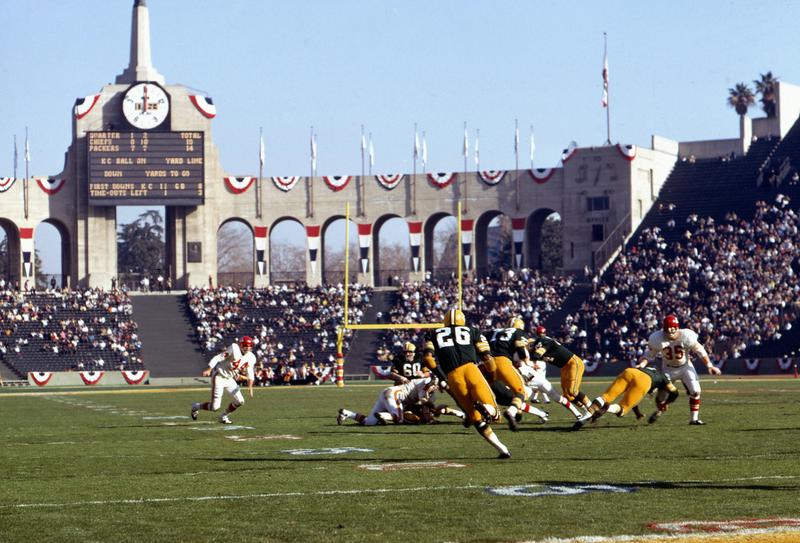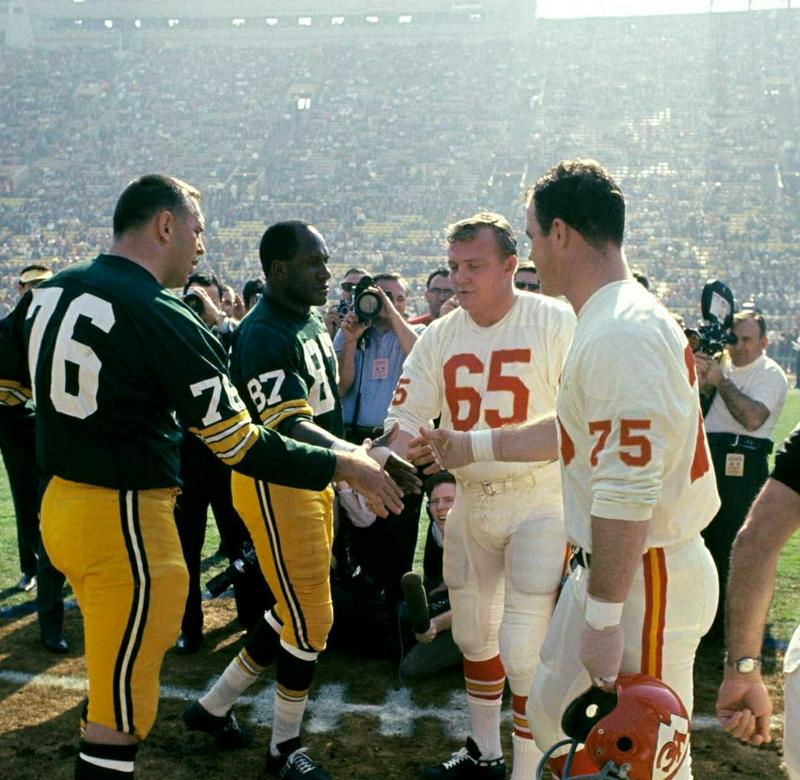First Super Bowl
By | August 10, 2021

Long before football became America’s new pastime, the Super Bowl began as a battle between the National Football League’s Green Bay Packers and the American Football League’s Kansas City Chiefs. That “Super Bowl'' paled in comparison to the monolith of American culture that the NFL’s penultimate game has become today. The litany of changes that occurred between the 1967 Super Bowl and its current iteration epitomizes how far the game has come and how much America and sports have changed since those nostalgic days. Here are some incredible facts and tidbits about how America’s true pastime got started.

“The Big One”
Want to know how different the original Super Bowl looked? First and foremost, they couldn’t even agree on what to call it. Kansas City Chiefs owner, Lamar Hunt got the idea to call it the Super Bowl from one of his children’s toys: the Super Ball. Then NFL Commissioner Pete Rozelle thought it lacked the weight and gravitas needed to describe his league’s biggest event.
His brainstorm came up with “Pro Bowl,” which they eventually put to use, and “The Big One.” Ultimately, they settled on the “AFL-NFL World Championship Game” but media types thought it was too much of a mouthful and just went with Hunt’s idea.

Not A Seismic Event
Super Bowls today attract the biggest celebrities, not only to attend but also to perform in the halftime show in front of many millions of people. The original Super Bowl failed to attract such talent. The headliners in ‘67 started with the Anaheim High School drill team followed by the University of Arizona and Grambling College marching bands and topped off with two dudes in jet packs. They also released 10,000 balloons and hundreds of pigeons in front of a two-thirds full Memorial Coliseum in Los Angeles. Not exactly Justin Timberlake revealing one of Janet Jackson’s boobs to the world.

Sparse Interest
Despite the NFL and AFL’s attempt to drum up interest in the game, over 22,000 seats remained empty. Apparently, the $12 tickets turned a lot of people off, including a thief who emptied the Kansas City Chiefs’ safe the night before. The bandit stole all the cash on hand but left more than 2,000 game tickets untouched. In fairness, the powers that be had only decided on the location of the game just weeks before. According to author Harvey Frommer, “The big game was a thrown-together affair, hastily organized. It was, in some ways, an afterthought to the merger agreement.”
However, the lack of interest actually might have saved lives! Just after kick-off, a giant iron hand fell from the scoreboard and plunged five stories, destroying a number of empty seats. Had they sold out the inaugural Super Bowl, it would have been marred by the accidental deaths of those crushed by the falling scoreboard piece. To further the Keystone Cops element of the broadcast, the game needed two kickoffs in the second half since they failed to show the first one due to the raucous halftime show going over time.

How Far We’ve Come
The game itself wasn’t all that interesting. After a relatively close first half, the Packers took over and won by 25 points, easily outstripping the 13.5 points spread. Ironically, roughly 15 million people in the Los Angeles area were blocked from viewing the game, thanks to archaic black-out rules for television. Instead, those who actually cared erected makeshift aerial antennas out of coat hangers and broomsticks to watch the game.
Today, a 30-second ad in the Super Bowl runs a company roughly $5.6 million. Back in the day, the very first Super Bowl netted between $75,000 and $85,000. Even adjusting for inflation that’s more or less $600,000 to $700,000. Now that’s what you call progress!
